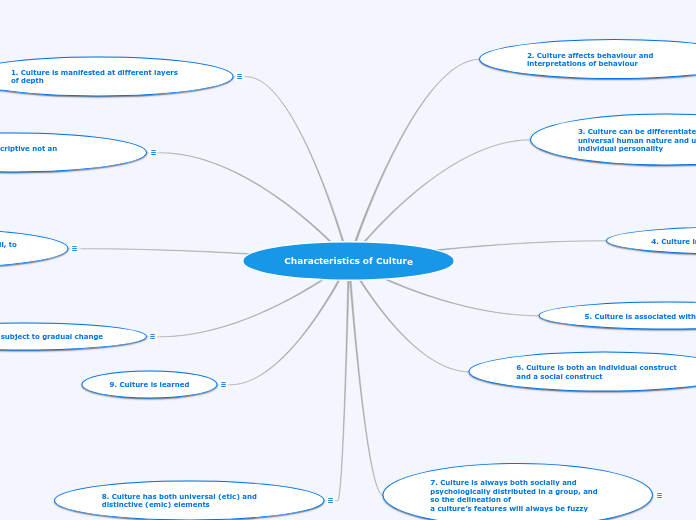Link between corporate culture and design - 1972: 7 CIC, Idealab, B&O products at MoMA
Role of the Chief Designer - concept of the sacred
Personifies corporate values and cultural stability
Non-member
From culture to values ("Poetry. Synthesis. Excellence") and a vision ("Courage to constantly question the ordinary in search of surprising, long lasting experiences") - 1999: derive an 'ought' from an 'is'
Values
Ennoble the material + make the moral strategically significant
Individually embraced, not socially imposed
Manager as spiritual shepherd
Replace the product: what is actually being sold - "a manufacturer of meaning, a merchant of messages rather than a producer of products" (p. 163)
Ideal of the 'self-managing employee'
Link between corporate culture and change - Breakpoint 1993: new Other = 'then'
Role of the CEO
Symbol meant to project and EMBODY corporate success
Root metaphor of the BODY: "mens sana in corpore sano", Olympic sports, 'slimming', 'fitness instructor', 'breakpoint'... LOVE/SEDUCTION
Active player
From values to an integrated 'Brand Religion': establishing an 'imagined community' - "based on the sharing of images, dreams, and ideas" - influence of Jesper Kunde, Corporate Religion (beyond Mogens Stiller Kjargaard): points the way to 'Brand Heaven'
Heresy
Break with prior elements of B&O culture, e.g. 7 CIC, importance of product and design
Created by outsiders
Abstract principles, impractical
'Priest' and 'scripture' not well known in company
Out of step with plain, unaffected culture of West Jutland
Religion
Dogma cannot be openly challenged without compromising membership and position as 'believer'
"Easily communicated and transmitted by the gifted preacher"
Importance of belief: requires no socialization, only conversion
Made explicit in scripture: values, visions, mission statements
Institutionalized, involves a hierarchy of priests
Centralized communication: speaking with one voice - (from Latin, religare): "to bind something together in a common expression"
Culture at B&O
Flexible Firm: "Flexibility calls for organizations that encourage cutting bureaucracy and create loose, informal, networks where employees are motivated by values rather than guided by rules."
Role of HRM
Playing an active role in the transformation of a 'product-focused' company into a 'value-based', 'vision-driven' one (p. 190) - close link to CEO
Operationalizing corporate culture into policies
Transmitting corporate culture
Empirical description of B&O
Transformation of the role of 'culture projects' in B&O history
Value/vision projects for external communication (esp. customers): fundamental values + religious metaphors replace notion of culture
Culture project for internal integration: work better together
Concepts and methodology
Comparison between notions of investigating culture: author's ("a process of mapping a multi-layered and sometimes contested terrain" - p. 67) vs Schein's ("a matter of disclosing a non-verbal consensus of basic assumptions" - p. 67)
Combining the micro (individual) and the macro (strategy) levels: culture as an instrument of power... but where motivation > control; educating > domesticating. Goal = "not simply to make people more productive, but to make them want to be more productive" (p. 81)
Agency: notion of consent (Burawoy); concept of concern (Barth) - "a precipitate of the experience of living as a member of a community", "summarize recurring life experiences" (p. 85)
Governmentality (Foucault): capillary form of power, "presupposes free subjects faced with a field of possibilities" (p. 81); a 'conduct of conduct'.
Culture concept as used at B&O
National culture ('consciousness of kind'): B&O as icon of Danish design and manufacturing industry - PH: 'democratise beauty' (p. 93)
Other = Japan ('consciousness of difference') - former war enemy, ruthless competitor, object of admiration and emulation
Something we can have: an interest, a distinction, a taste, close to the classical, elite notion of 'culture'
Something we are a part of: non-hierarchical, a 'way of life'
Ethnography of 'lay ethnographers' (high reflexivity): the challenge is to "maintain a constant awareness of the differences that underlie the surface similarity in the often-identical 'experience-far' concepts used by the ethnographer and the informants" (p. 20)
Native reflexivity: social, technical, symbolic
Difficult distinction between ethnographer and employees: the researcher is also a positioned actor
Problem: "the experience and organizational life of the employees are radically reflexive and theorized" (p. 39)
Participant observation: "one of the central disciplinary 'myths' of anthropology" (p. 36)
Dialectical move (Bourdieu): "acknowledge the difference between the two, and the inherent distortion of lived reality that comes with distant observation"
Hermeneutical circle (Geertz): oscillation between part (experience-near) and whole (experience-distant)
Logical opposites: phenomenological participant vs objectivist observer









